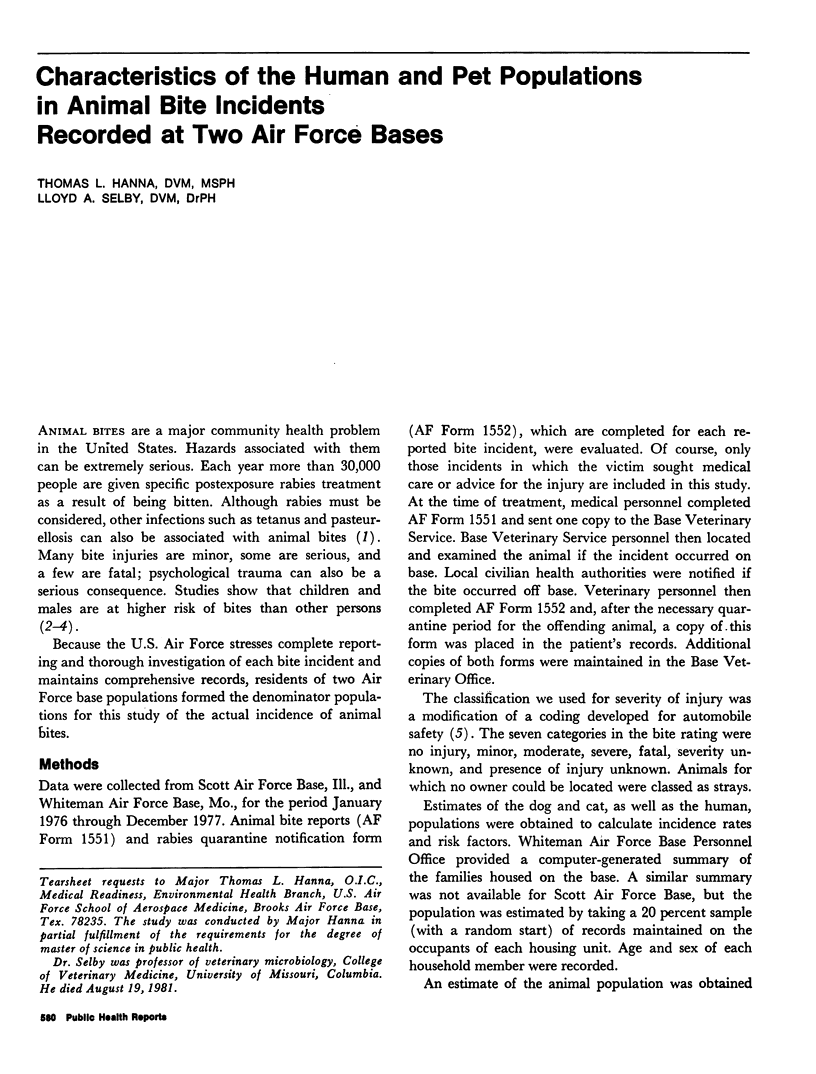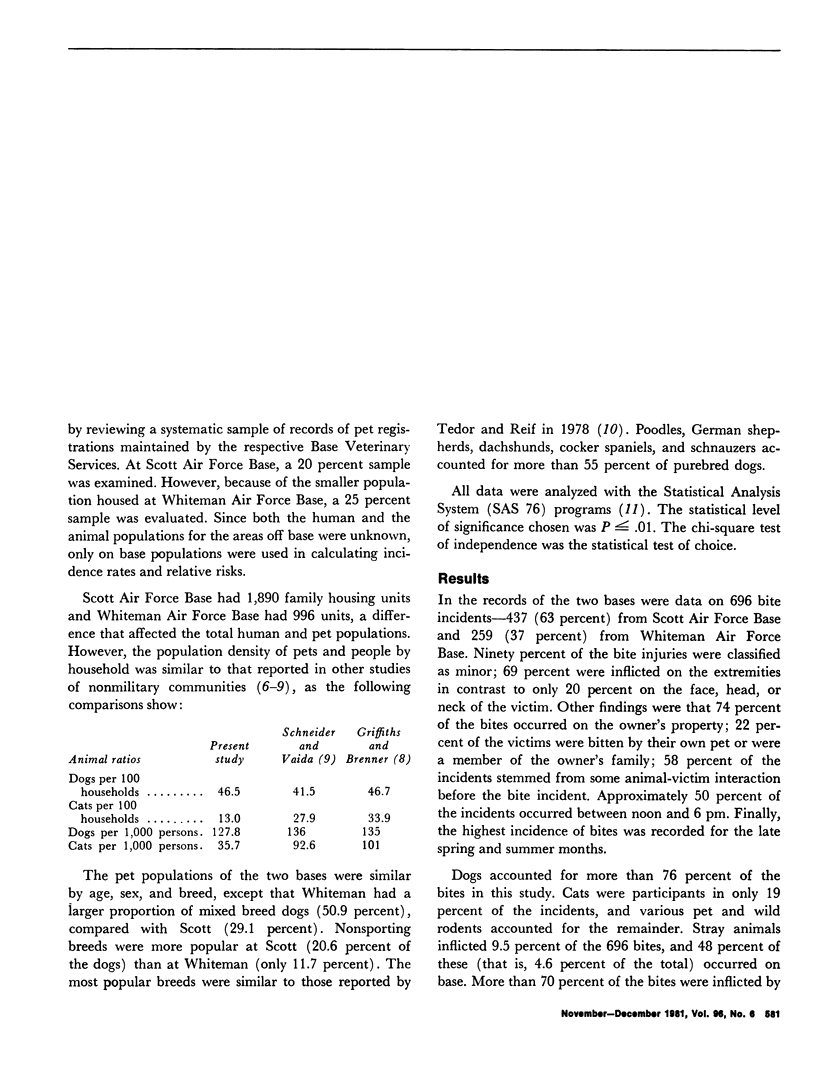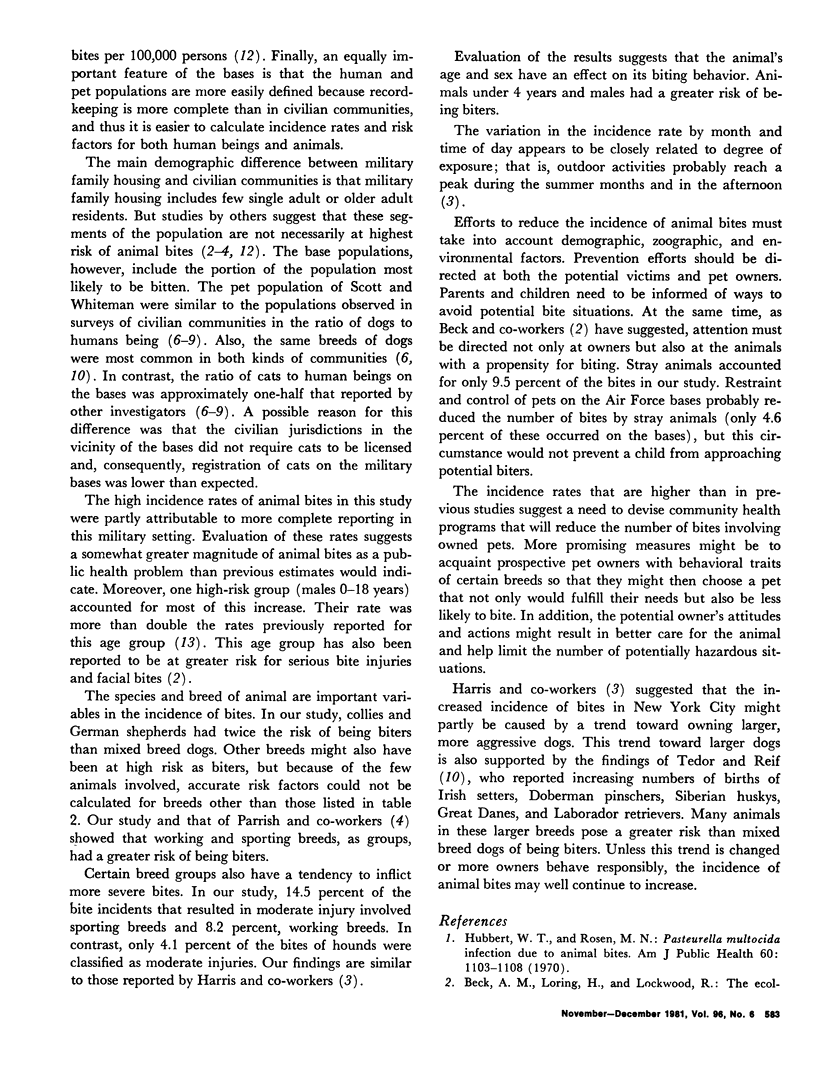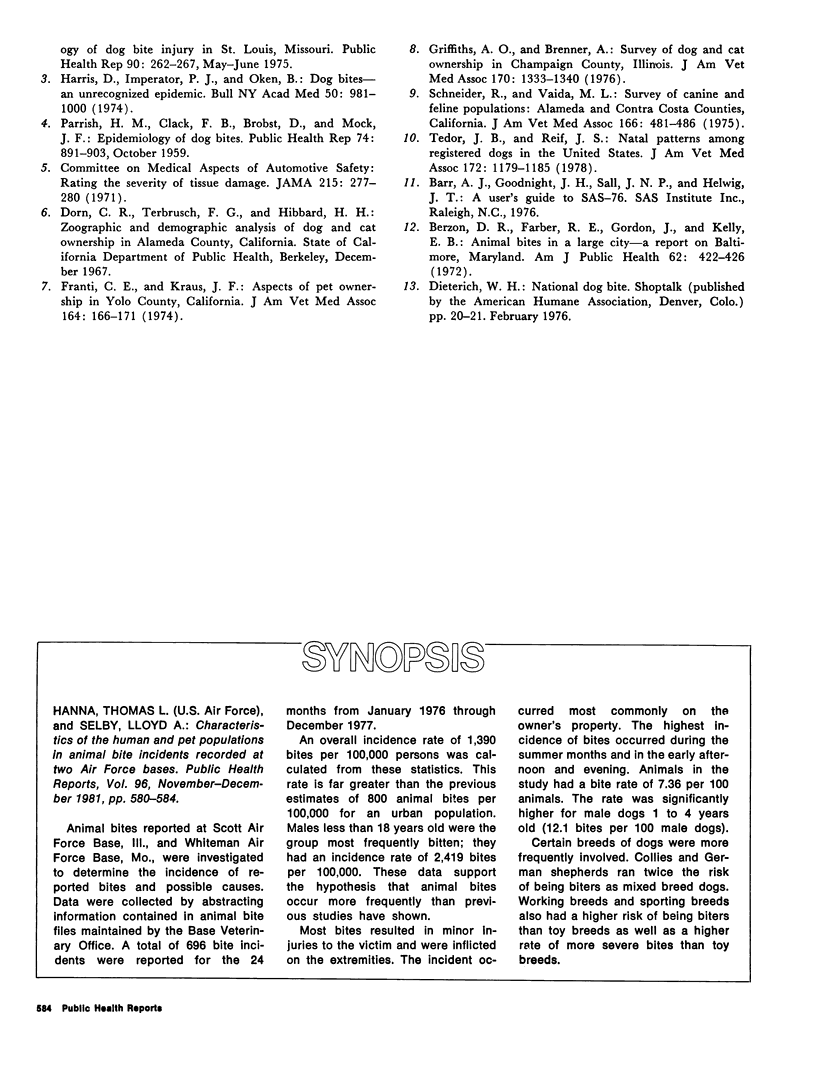Abstract
Animal bites reported at Scott Air Force Base, Ill., and Whiteman Air Force Base, Mo., were investigated to determine the incidence of reported bites and possible causes. Data were collected by abstracting information contained in animal bite files maintained by the Base veterinary Office. A total of 696 bite incidents were reported for the 24 months from January 1976 through December 1977. An overall incidence rate of 1,390 bites per 100,000 persons was calculated from these statistics. This rate is far greater than the previous estimates of 800 animal bites per 100,000 for an urban population. Males less than 18 years old were the group most frequently bitten; they had an incidence rate of 2,419 bites per 100,000. These data support the hypothesis that animal bites occur more frequently than previous studies have shown. Most bites resulted in minor injuries to the victim and were inflicted on the extremities. The incident occurred most commonly on the owner's property. The highest incidence of bites occurred during the summer months and in the early afternoon and evening. Animals in the study had a bite rate of 7.36 per 100 animals. The rate was significantly higher for male dogs 1 to 4 years old (12.1 bites per 100 male dogs). Certain breeds of dogs were more frequently involved. Collies and German shepherds ran twice the risk of being biters as mixed breed dogs. Working breeds and sporting breeds also had a higher risk of being biters than toy breeds as well as a higher rate of more severe bites than toy breeds.
Full text
PDF




Selected References
These references are in PubMed. This may not be the complete list of references from this article.
- Berzon D. R., Farber R. E., Gordon J., Kelley E. B. Animal bites in a large city--a report on Baltimore, Maryland. Am J Public Health. 1972 Mar;62(3):422–426. doi: 10.2105/ajph.62.3.422. [DOI] [PMC free article] [PubMed] [Google Scholar]
- Franti C. E., Kraus J. F. Aspects of pet ownership in Yolo County, California. J Am Vet Med Assoc. 1974 Jan 15;164(2):166–171. [PubMed] [Google Scholar]
- Griffiths A. O., Brenner A. Survey of cat and dog ownership in Champaign County, Illinois, 1976. J Am Vet Med Assoc. 1977 Jun 1;170(11):1333–1340. [PubMed] [Google Scholar]
- Harris D., Imperato P. J., Oken B. Dog bites--an unrecognized epidemic. Bull N Y Acad Med. 1974 Oct;50(9):981–1000. [PMC free article] [PubMed] [Google Scholar]
- Hubbert W. T., Rosen M. N. Pasteurella multocida Infections: I. Pasteurella Multocida Infection Due to Animal Bite. Am J Public Health Nations Health. 1970 Jun;60(6):1103–1108. doi: 10.2105/ajph.60.6.1103. [DOI] [PMC free article] [PubMed] [Google Scholar]
- PARRISH H. M., CLACK F. B., BROBST D., MOCK J. F. Epidemiology of dog bites. Public Health Rep. 1959 Oct;74:891–903. [PMC free article] [PubMed] [Google Scholar]
- Schneider R., Vaida M. L. Survey of canine and feline populations: Alameda and Contra Costa Counties, California, 1970. J Am Vet Med Assoc. 1975 Mar 1;166(5):481–486. [PubMed] [Google Scholar]
- Tedor J. B., Reif J. S. Natal patterns among registered dogs in the United States. J Am Vet Med Assoc. 1978 May 15;172(10):1179–1185. [PubMed] [Google Scholar]


